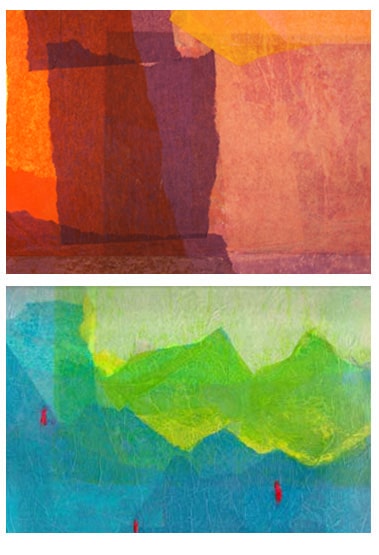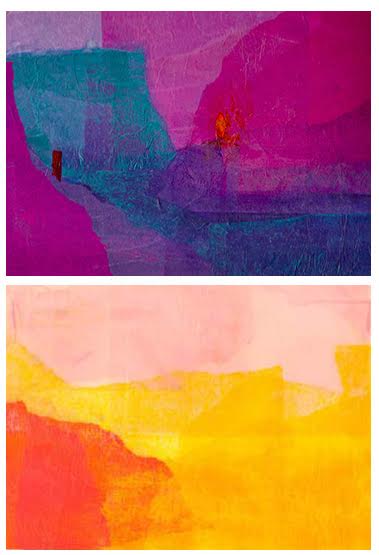Cultivating The Fertile Ground of Creativity
By Karen Stefano:
Play is the only way the highest intelligence of humankind can unfold.
.-Joseph Chilton Pearce

Creativity and play help adults reconnect to their intuitive energies, and to the younger, inner child parts of themselves. According to Swiss psychiatrist C.G. Jung: “The creation of something new is not accomplished by the intellect but by the play instinct…If you have nothing at all to create, then perhaps you create yourself.” It is a creative act to discover who we already are before the imprinting into our bodies and psyches of our parents, grandparents, and the ancestors before us. However, it takes effort and determination to slow life down to a pace where creativity can begin to enrich our experiences.
When we engage in creative activities propelled by an energy that has nothing to do with logic, a whole new field of experience is opened. British psychanalyst David Winnicott recognizes that “It is only in playing that the individual is able to be creative and to use the whole personality, and it is only in being creative that the individual discovers the self.” The late educator and psychologist Abraham Maslow, best known for Maslow’s Five Stages of the Hierarchy of Needs, agrees with Winnicott’s perspective emphasizing that “Almost all creativity involves purposeful play.”
While creativity is instinctive to us it can easily get blocked or shut down, causing us to lose track of our essential self. This negatively impacts our physical and emotional health and can leave unmet emotions, anxiety and frustration trapped in the body and psyche. In order to deepen a connection with ourselves we need to create the inner space necessary for curiosity, creativity, and inspiration to flow. In other words, we need to make time to play.
One avenue of opening to the creative channels is making and engaging with tissue paper collages. The Tissue Paper Collage Method was developed in the 1970s by the late Jungian analyst Dr. Edith Wallace. This technique is a synergy of expressive art and self-discovery that integrates collage making, storytelling, journaling, dance, and meditation as a way to encourage the emergence and reconnection to the essential self. The Tissue Paper Collage Method opens creative pathways of expression through purposeful play that naturally bridge us to the world of our potential.
One avenue of opening to the creative channels is through making and engaging with collages, where the hands do the thinking without thought and play inventively with colorful tissue paper, letting images emerge from deep within. The mutual activity of hands, eyes and brain produce a subtly different kind of awareness. In this process, the mind has time to let go of words and any purposeful thought, so it can relax into the moment.
The visual and kinesthetic collage process begins with thirty colors of translucent tissue paper, glue, brush and board. The instructions are simple: tear the tissue paper, paste, and allow whatever arises to lead the way. We come to life, as does the collage, as we play with the colors, shapes and textures of the paper. Playing inventively with colorful tissue paper helps us bypass the linear mind because the mutual activity of the hands, eyes and brain produce a subtly different kind of awareness that allows the mind to let go of words and any purposeful thought. As the instinctual and primitive parts of the brain are activated, deeper interior truths are free to emerge. The symbolic language of the unconscious speaks to us in image and metaphor and we are able to transform the creative content that arises into visible form so it can be processed, understood and integrated.
Ultimately, we all carry the creative spark that, once ignited, gives us the power to transform and thrive. As the great Maya Angelou concluded, “You can’t use up creativity. The more you use, the more you have.” I created the Five Practices to Cultivate Creativity to encourage playfulness and creativity in your own life.
Five practices to cultivate creativity

- Stop. Slow down. Breathe.
Stop! Decelerate from the high speed of your life. Slow down enough to breathe deeply and quiet the body/mind. This is your starting point. - Ground your body to the earth.
Nurture a deeper awareness of your connection to the earth. Feel your feet planted on the ground. Imagine growing roots deep into the earth. Allow the intelligence and energy from the earth to rise upwards through your feet and into your body. Take time to feel the connection - Tune in to yourself and listen.
Pay attention to what is going on in your body, mind and emotions. Find a contemplative practice in which you can locate yourself in your physiology, allowing your mind to empty, thoughts to flow freely, and inspiration to enter spontaneously. - Trust in the unknown. Appeal to the Sacred.
Cultivate an open and receptive state of mind. Make an appeal to that which is sacred to you, and wait. - Dwell in what you are doing. Give it time.
Now is the time to play. Allow your curiosity to roam. Put ambition and expectations on hold for a short while. Trust what arises.

